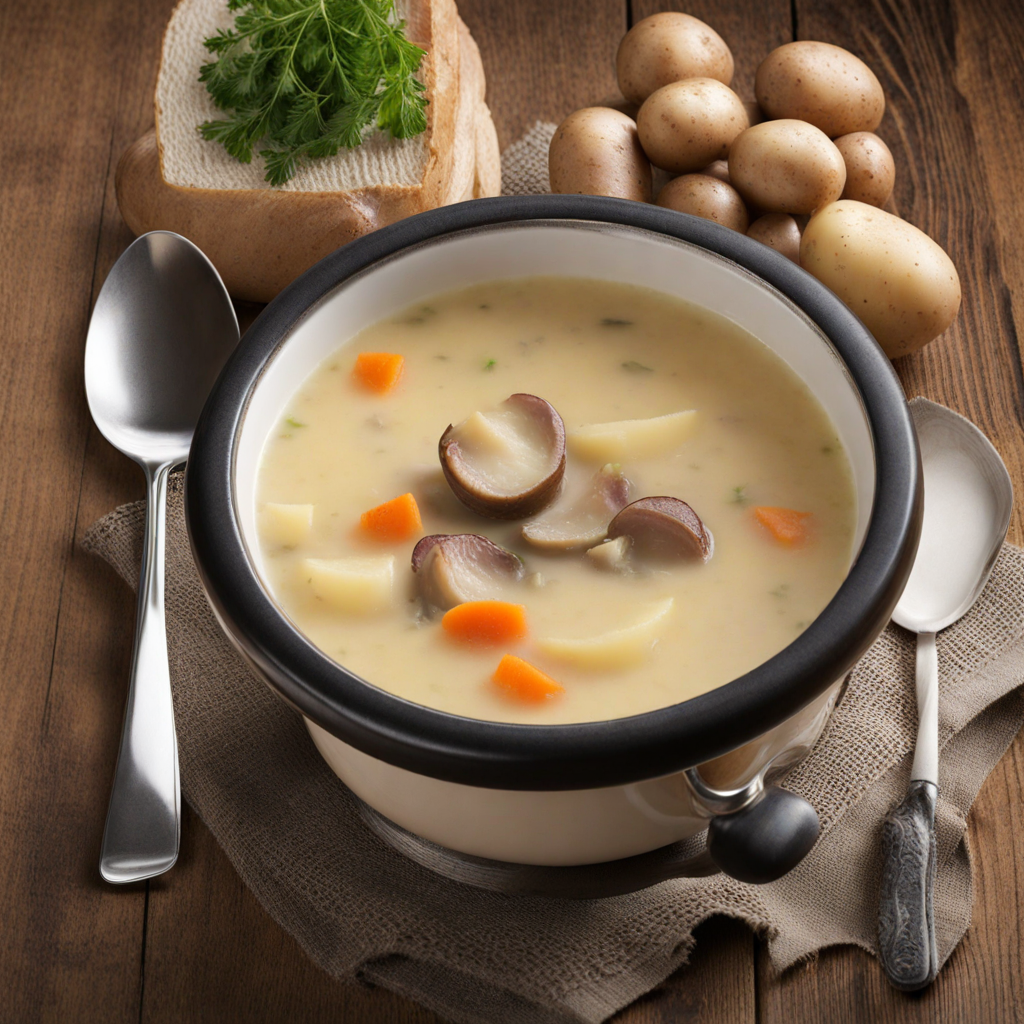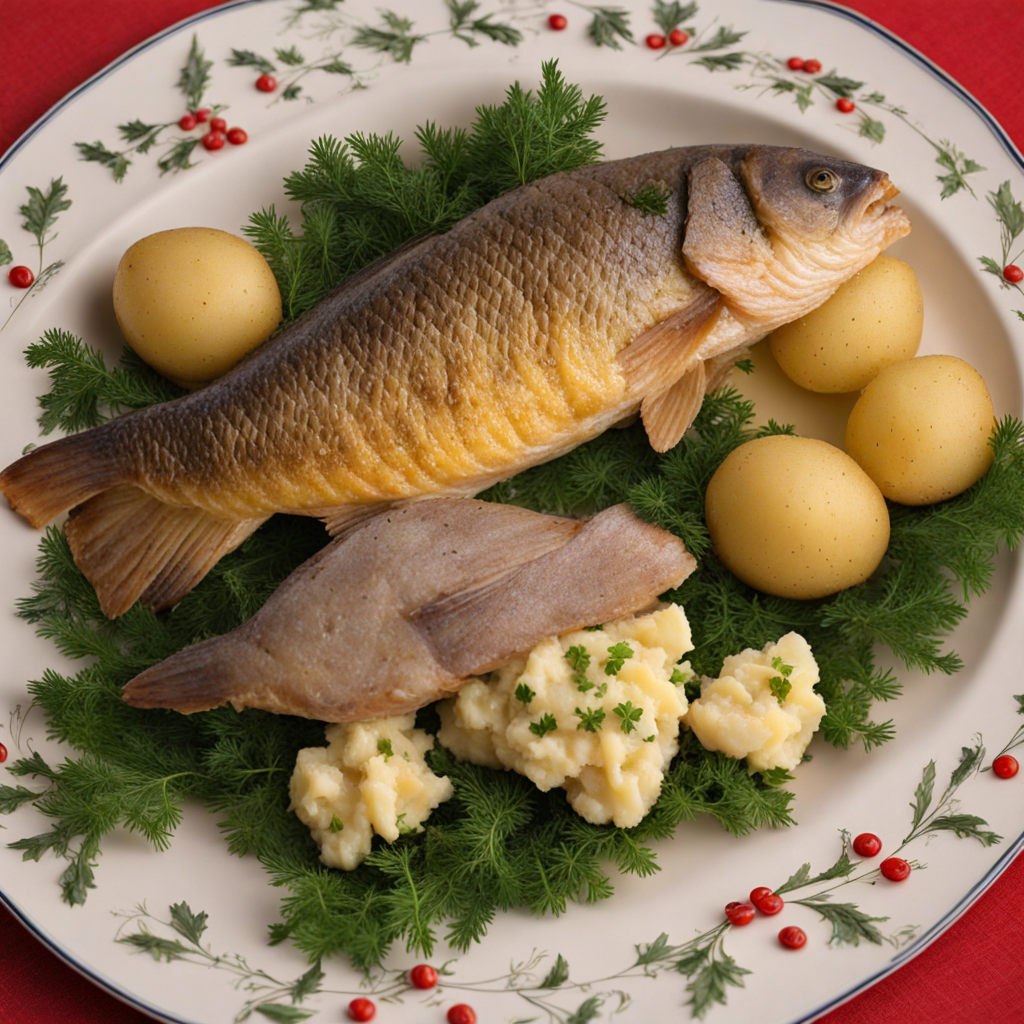Potato Soup
Potato Soup, known as "bramborová polévka" in the Czech Republic, is a comforting and hearty dish that embodies the essence of Czech home cooking. This creamy soup is traditionally made with simple ingredients such as potatoes, onions, carrots, and sometimes leeks, all of which are simmered until tender. The potatoes are the star of the show, providing a rich, starchy base that gives the soup its velvety texture. The addition of garlic and herbs like parsley or dill enhances the flavor, creating a warm and inviting aroma that fills the kitchen as it cooks. What sets Czech Potato Soup apart is its versatility. It can be made in various ways, with some recipes incorporating bacon or smoked sausage for a smoky depth, while others keep it vegetarian, allowing the natural flavors of the vegetables to shine through. A splash of cream or milk is often added towards the end of cooking to elevate the soup's creaminess, making each spoonful a delight. Some variations might include a touch of paprika or caraway seeds, adding a subtle hint of spice that complements the earthiness of the potatoes perfectly. Served piping hot, Potato Soup is often enjoyed as a starter or a light meal, accompanied by crusty bread or dumplings. It's a dish that warms not only the body but also the soul, evoking memories of family gatherings and cozy evenings. Whether you're exploring Czech cuisine for the first time or revisiting a beloved classic, Potato Soup offers a deliciously satisfying experience that highlights the beauty of simple, wholesome ingredients.
How It Became This Dish
Bramborová Polévka: A Culinary Journey Through Czech History The Czech Republic, a land steeped in rich history and vibrant culture, boasts a culinary landscape that reflects the nation’s agricultural abundance and its people’s resourcefulness. Among the many traditional dishes that grace Czech tables, Bramborová polévka, or potato soup, holds a special place. This humble yet hearty dish encapsulates not only the essence of Czech comfort food but also the evolution of the nation’s cuisine over centuries. Origins The origins of Bramborová polévka can be traced back to the introduction of the potato in Europe during the late 16th century. Originally cultivated by the indigenous peoples of the Andes, the potato made its way to Europe through Spanish explorers. By the 18th century, it had become a staple food in many Eastern European countries, including the Czech lands. The adaptability of the potato to various climates and soils made it an ideal crop for Czech farmers, leading to its widespread cultivation. The early versions of potato soup likely emerged from peasant kitchens, where the focus was on using readily available ingredients to create nourishing meals. The simple combination of potatoes, water, and salt provided sustenance to many families, particularly during the harsh winters when fresh vegetables were scarce. The use of potatoes in soups reflects the broader Czech culinary tradition of using what is on hand, resulting in a dish that is both practical and comforting. Cultural Significance Bramborová polévka is more than just a dish; it embodies the spirit of Czech hospitality and community. In a culture where shared meals are central to family life, this soup often serves as a starter during family gatherings, holidays, and festive occasions. Its preparation is a communal effort, with family members gathering in the kitchen to chop vegetables, stir the pot, and share stories. The aroma of simmering potatoes, onions, and herbs wafting through the home is a reminder of the warmth and connection that food fosters. Traditionally, Bramborová polévka is enjoyed throughout the year, but it has special significance during Lent and other fasting periods. Czechs have a long-standing tradition of abstaining from meat during these times, and the soup serves as a satisfying and hearty alternative. It symbolizes resilience and resourcefulness, as families adapted their diets to the seasonal availability of ingredients. Evolution Over Time As the Czech Republic underwent significant political, social, and economic changes over the centuries, so too did its culinary landscape. The 19th century, marked by a rise in nationalism and a renewed interest in folk traditions, saw a revival of regional dishes, including Bramborová polévka. Cooks began experimenting with different ingredients, incorporating local herbs, spices, and even regional meats, such as smoked sausages or bacon, to enhance the flavor profile of the soup. These adaptations reflected the diverse culinary influences that shaped Czech cuisine, from German and Austrian to Hungarian. The industrialization of the Czech lands in the late 19th and early 20th centuries also impacted food production and availability. As people migrated to urban centers in search of work, traditional dishes like Bramborová polévka became a staple in city households as well. Canned goods and convenience foods made their way into kitchens, but the essence of the soup remained unchanged. It continued to be a dish that could be made quickly and economically, ensuring its place in the hearts and homes of Czechs. Modern Interpretations In recent years, Bramborová polévka has experienced a renaissance, with chefs and home cooks alike reinventing the classic recipe to suit contemporary tastes. While traditional versions typically feature potatoes, onions, and broth, modern interpretations might include a variety of vegetables, such as carrots, celery, and leeks, for added depth and nutrition. Some recipes incorporate cream or sour cream, lending a velvety texture to the soup, while others opt for a lighter, broth-based version. The rise of the farm-to-table movement has also influenced the way Bramborová polévka is prepared and enjoyed. With an emphasis on fresh, seasonal ingredients, many cooks now seek out locally sourced potatoes and herbs, celebrating the flavors of the Czech countryside. This shift not only enhances the dish’s taste but also connects diners to the land and its agricultural heritage. Conclusion Bramborová polévka stands as a testament to the rich culinary history of the Czech Republic. From its humble beginnings as a peasant dish to its modern adaptations, the soup reflects the resilience and creativity of the Czech people. It embodies a sense of belonging, warmth, and community, serving as a reminder of the importance of shared meals in fostering connection. As the Czech Republic continues to embrace its culinary heritage while adapting to contemporary tastes, Bramborová polévka remains a beloved staple. Whether enjoyed in a cozy home during the cold winter months or served at a festive gathering, this potato soup is a dish that transcends time, uniting generations through its comforting flavors and cultural significance. In every bowl of Bramborová polévka, one can taste the history, tradition, and love that have nourished the Czech people for centuries.
You may like
Discover local flavors from Czech Republic







